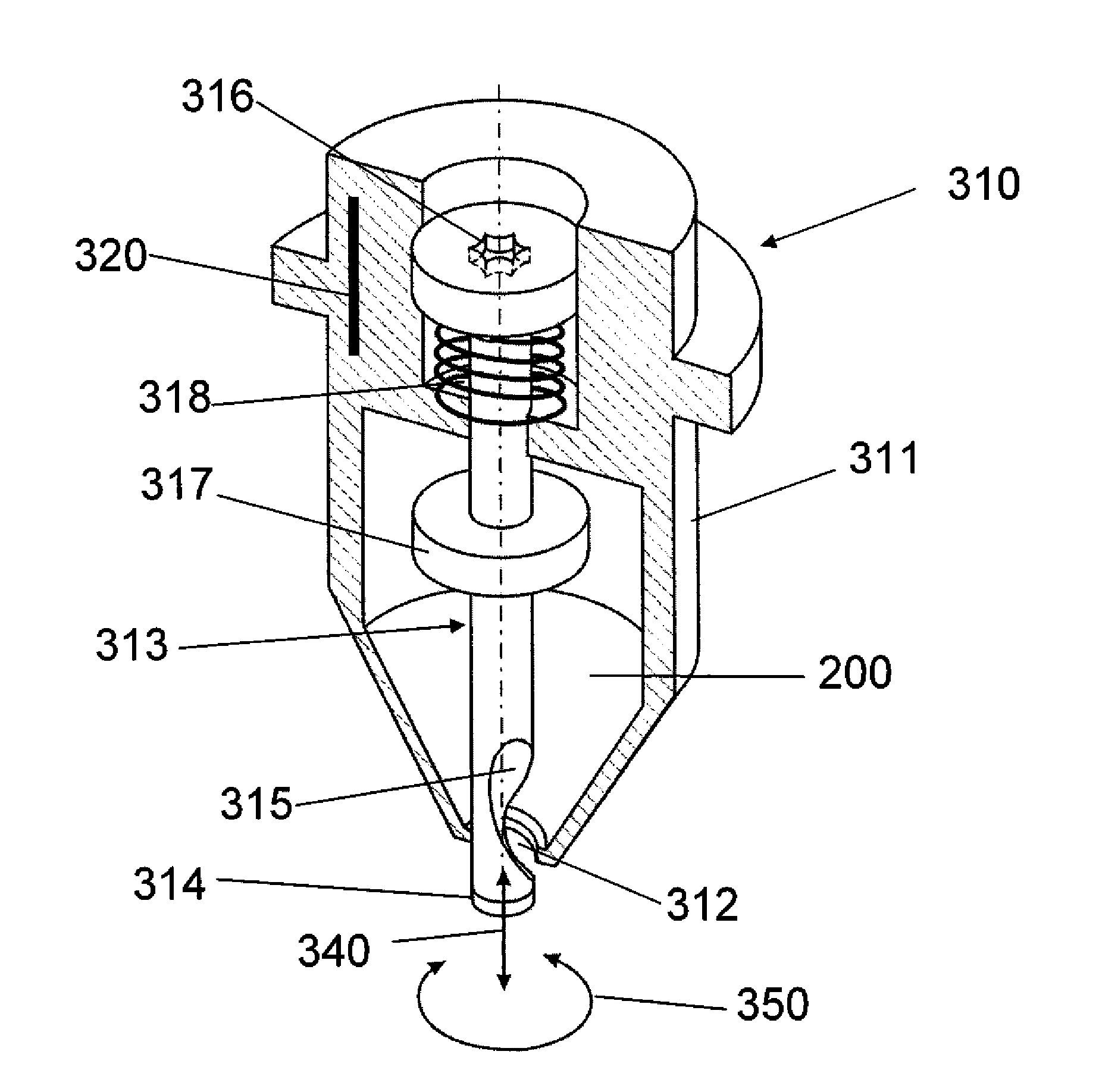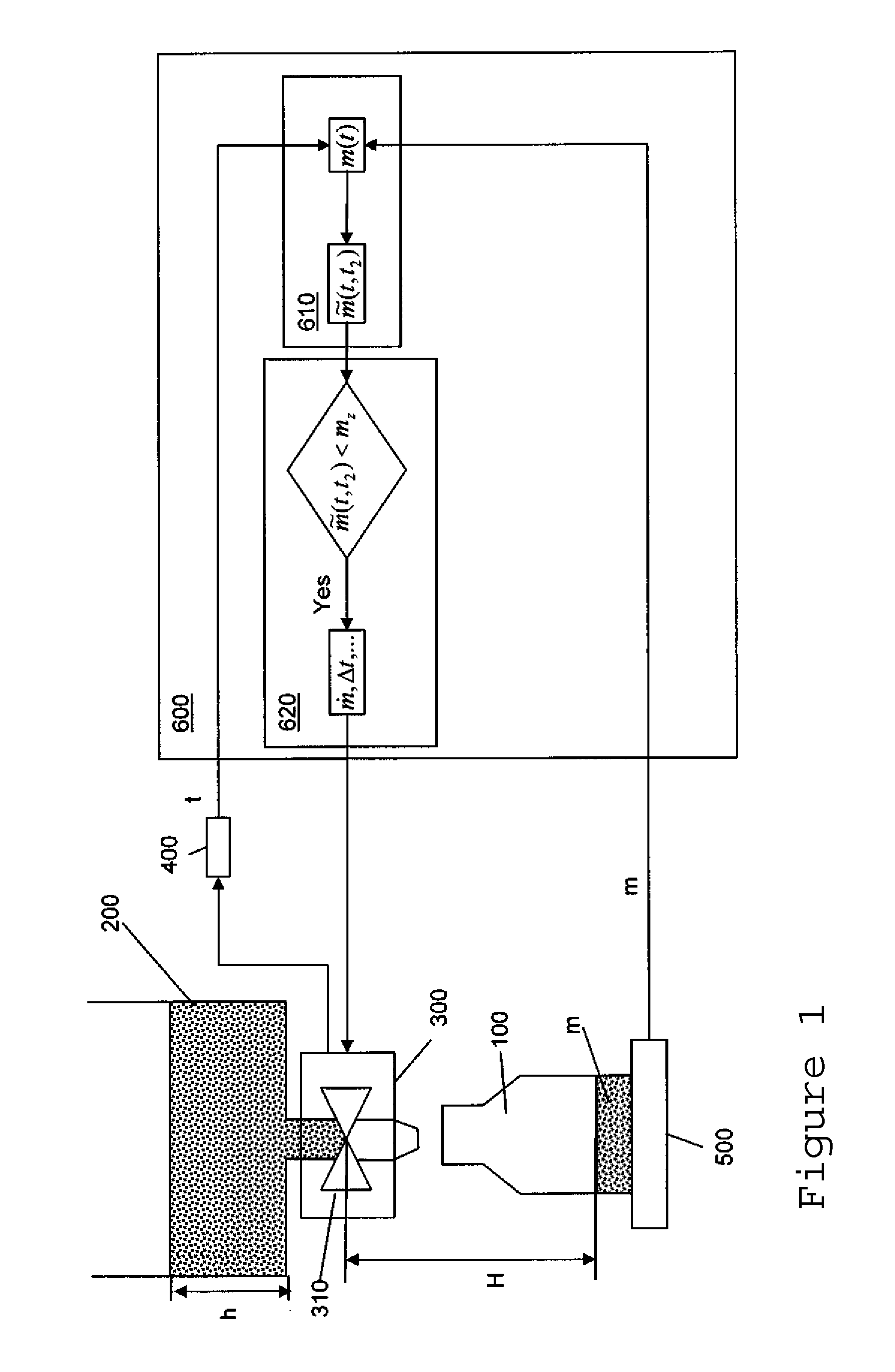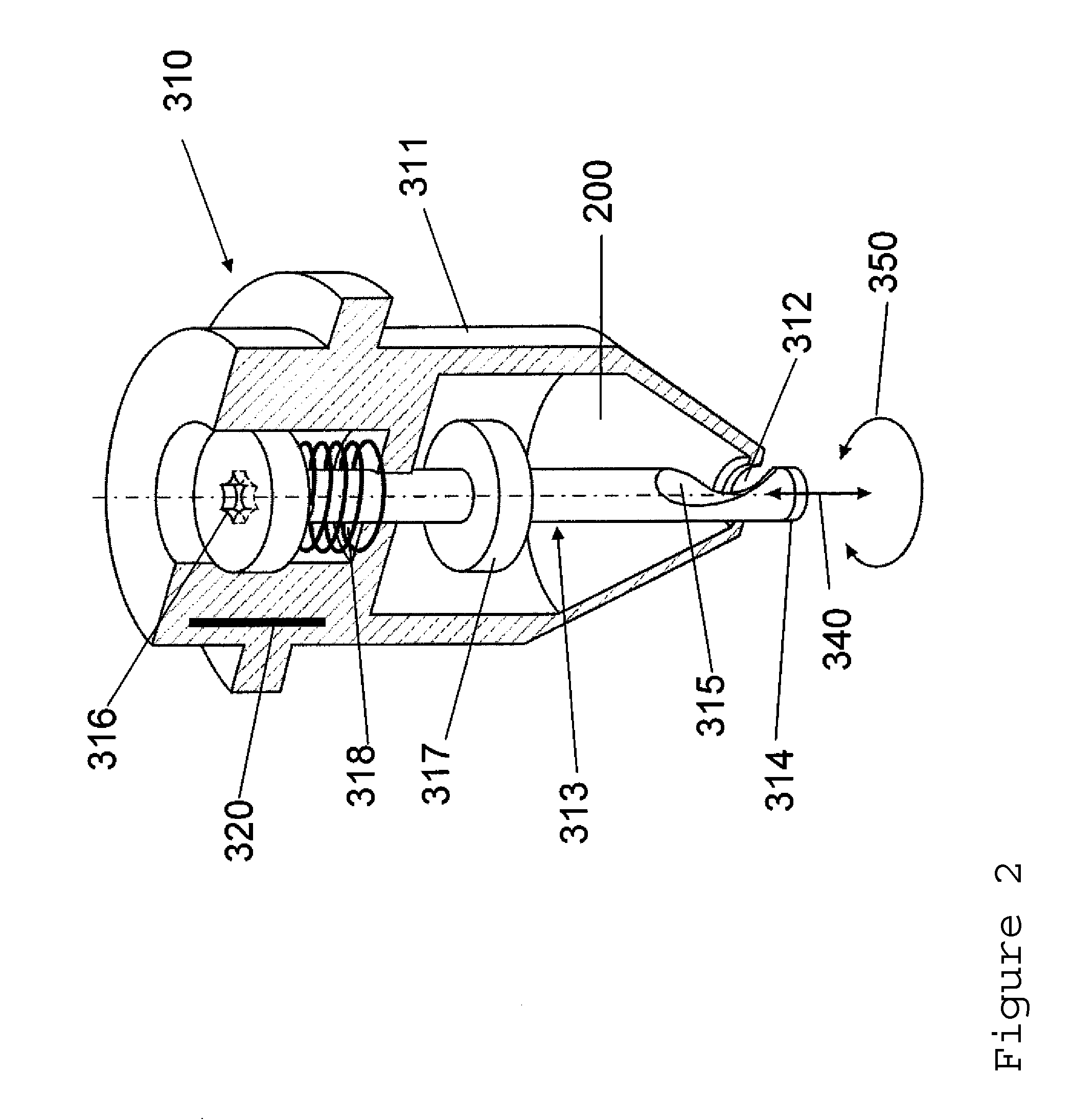Method and device to fill receiving containers
a technology of receiving container and receiving container, which is applied in the direction of liquid handling, packaged goods type, instruments, etc., can solve the problems of inaccuracy, delayed flow of bingham substance at the beginning of the flow process, and complex rheological properties in particular, so as to achieve a m-over-m effect of mass flow
- Summary
- Abstract
- Description
- Claims
- Application Information
AI Technical Summary
Benefits of technology
Problems solved by technology
Method used
Image
Examples
Embodiment Construction
[0046]FIG. 1 illustrates a receiving container 100 which can be filled by way of a dosage-dispensing device 300 with a substance held in the reservoir 200 up to the fill level h. The dosage-dispensing device 300 is tied to a timing device 400 whereby the elapsed time from the start of the fill cycle can be determined and the signal representing the measured time can be transmitted to a controller unit 600. The receiving container is arranged on a balance 500, so that the weight of the substance that is present in the receiving container 100 can be determined. The signal representing the measured weight or mass can likewise be transmitted to the controller unit 600. In the controller unit 600, the time signal and the mass signal are tied to each other, so that the result represents the mass m(t) which is present at a certain elapsed time t from the start of the dosage-dispensing cycle.
[0047]Ideally, the valve 310 would be opened up more and more until the receiving container 100 hold...
PUM
| Property | Measurement | Unit |
|---|---|---|
| mass | aaaaa | aaaaa |
| mass flow rate | aaaaa | aaaaa |
| time | aaaaa | aaaaa |
Abstract
Description
Claims
Application Information
 Login to View More
Login to View More - R&D
- Intellectual Property
- Life Sciences
- Materials
- Tech Scout
- Unparalleled Data Quality
- Higher Quality Content
- 60% Fewer Hallucinations
Browse by: Latest US Patents, China's latest patents, Technical Efficacy Thesaurus, Application Domain, Technology Topic, Popular Technical Reports.
© 2025 PatSnap. All rights reserved.Legal|Privacy policy|Modern Slavery Act Transparency Statement|Sitemap|About US| Contact US: help@patsnap.com



